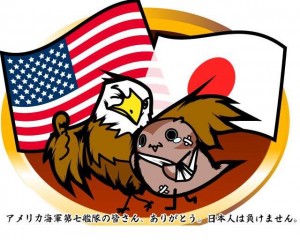2012-12-19 By Richard Weitz
The change in government in Japan offers an opportunity to move forward in re-shaping the US-Japanese Alliance.
The Alliance has now a long history, but re-shaping the Alliance will be crucial in the period ahead, notably with the challenges from North Korea, the PRC and new regions such as the Arctic.
This summer the third Armitage-Nye Report was released on The US-Japan Alliance: Anchoring Stability in Asia and provides a useful starting point to the discussion of where next in the Alliance.
The report aims to provide guidance how Washington and Tokyo can work to prevent Japan’s continued “drift into tier-two status,” which the authors fear would harm the interests of other Asian countries as well as their own.
The three Nye-Armitage reports have all stressed the importance of having a strong US-Japan relationship as an anchor for the broader US policy in East Asia.
In particular, the authors argue that a strong alliance will help discourage Beijing’s adventurism and manage China’s rising power, while a weak Japanese-American alliance would invite China to try to break it or exploit its fissures.
The report calls for greater bilateral efforts to align Japanese and U.S. roles, missions, capabilities, and concepts, such as Dynamic Defense and Air Sea Battle, as well as consider how to expand the geographic and functional range of such missions.

The authors want the Japan’s Self-Defense Forces (JSDF), which have by now acquired the capabilities to contribute to addressing a wide range of regional and even global security challenges, to assume a more prominent role, in collaboration with the United States, in protecting the Persian Gulf from Iranian mines and in joint US-Japan surveillance of the South China Sea.
In turn, the authors want U.S. Forces in Japan (USFJ) to assume more specific roles and missions in defending the Japanese homeland as well as addressing regional security challenges. They hope this will contribute to improving the ability of the two countries’ ground forces to collaborate.
In their view, “U.S. Army/Marine Corps cooperation with JGSDF should make progress toward interoperability and move toward an amphibious, agile, and deployable force posture.” Their operational interoperability has lagged behind that of their navy and air forces, but Operation Tomodachi, their post-March 2011 joint campaign to help Japan recover from the devastating earthquake-tsunami-nuclear disasters, showed that they have the means to operate on a wider range of missions if Japan can relax its prohibition on collective self-defense.
Noting that the JSDF have been participating in international peacekeeping missions for the past 20 years, saving lives and enhancing Japan’s soft power, they call for the Japanese government to widen the permissible actions of JSDF soldiers on such missions.
At present, they are legally permitted to use force only for self-defense. They urge the enactment of legislation to allow the JSDF to use force to defend peacekeepers from other countries serving in the operation as well as civilians under threat. But thus far the Japanese parliament has declined to adopt a law authorizing the first measure.
The LDP has pledged during the recent election campaign to relax Japan’s long-standing restrictive interpretation that their constitution, specifically Article 9, excludes Japan’s participation in “collective self-defense” arrangements.
Past Japanese governments have cited their supposed constitutional exclusion of collective self-defense operations as limiting their ability to provide direct military assistance to U.S. forces engaged in armed combat outside Japan, including prohibiting joint combat operations with the United States against a third country. Under Article V of the U.S.-Japan Treaty on Mutual Cooperation and Security, signed in 1960, the United States is obliged to defend Japan without reciprocation, leading to mutual security cooperation but not mutual defense.
Although earlier LDP-led governments sought to amend the Constitution, political instability in Tokyo has delayed progress on this issue.
Since two-thirds of the Diet must vote to amend the Constitution, followed by a supporting national referendum, the LDP might find it easier to expand Japan’s defense activities by reinterpreting some constitutional limitations in a less stringent manner, which successive governments have already been doing since 1991.
The current interpretation of Article 9 restricts Tokyo’s ability to sell weapons to foreign countries, despite the fact that the Japanese government’s limited weapons procurement budget can makes it uneconomical to research and design certain very expensive weapons systems.
In January 2005, the Japanese Federation of Economic Organizations recommended constitutional revision on the grounds that Tokyo’s inability to participate in collective defense prohibits Japan from supporting allies in the form of weapons sales.
Given the declining defense budgets in both countries, the authors of “Anchoring Stability” join others in calling for greater defense industrial cooperation between Japan and the United States.
U.S. firms could improve their performance and lower their costs by being able to import more leading Japanese’ technologies. Japan would also benefit from being able to sell arms to Australia, India, and other Asian customers as well as perhaps Europe, perhaps in exchange for keeping the EU arms sales ban against China. At the symbolic level, such long-term defense industrial cooperation suggests that the alliance ties will be enduring.
The report notes the value of harmonizing the two countries’ defense requirements as well as their research & development efforts in such long-term projects as the next-generation fighters, warships, radars, strategic lift, communications, and long-range interoperable ISR capabilities. It also calls on the US government “to better integrate and invigorate the Sciences and Technology Forum with the policy-centered Security Consultative Committee structure “as well as streamline its own foreign defense sales processes “to ensure timely and strategically consistent decisions.”
The exemplary Japanese-U.S. missile defense cooperation in developing missile defenses shows this potential.
Both sides took a very complex, controversial, and expensive defense capability and achieved cost savings and superior results through co-development, co-production, and co-deployment of BMD systems. The Japanese government also took appropriate measures to exempt BMD systems from its export ban to make it easier for the United States to export to Europe the next-generation missile defense system, SM3 Block 2A, co-developed by Japan and the United States.
But even here the constitutional prohibition against collective defense presents problems since it impedes Japanese participation in a joint BMD system that can defend U.S. forces under missile attack in East Asia. The current interpretation might also exclude using Japanese BMD assets to intercept a theoretical launch of an intercontinental ballistic missile from North Korea or China towards the United States.
In addition, the F-35 issue has highlighted the opportunity costs of not engaging in such defense industrial cooperation.
Although the JSDF see the F-35 as an essential strategic capability upgrade to its aging F-15 fleet, Japan could not participate in the multinational JSF development program because of its arms export ban. Japan has already purchased 42 F-35 aircraft, and can be expected to purchase at least one hundred more, but Japan’s absence for the development program has prevented Japanese firms from producing F-35s under license.
Credit for Image Above:
http://www.sankakucomplex.com/2011/04/04/operation-tomodachi-cartoon-adorable-vs-creepy/
For our look at the evolution of Japanese defense policy see the following:
https://www.sldinfo.com/dynamic-defense-and-the-japanese-defense-white-paper-2012/
https://www.sldinfo.com/shaping-an-attack-and-defense-enterprise-for-the-pacific/
https://www.sldinfo.com/japan-in-a-nuclear-weapons-neighborhood/
https://www.sldinfo.com/us-military-presence-and-the-dynamic-defense-of-japan/
https://www.sldinfo.com/re-shaping-the-us-japanese-relationship-for-the-dynamic-defense-of-japan/
https://www.sldinfo.com/japanese-defense-procurement-at-a-turning-point/
https://www.sldinfo.com/japan-and-global-defense-industrial-cooperation/
https://www.sldinfo.com/japans-hard-power-assets/
https://www.sldinfo.com/japan-and-china-on-collision-course/
https://www.sldinfo.com/japan-seeks-a-new-blend-of-soft-with-hard-power/
https://www.sldinfo.com/dynamic-defense-of-japan-the-north-korean-driver/
https://www.sldinfo.com/the-impact-of-japan-russian-tensions-on-a-new-pacific-strategy/


